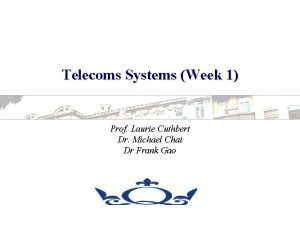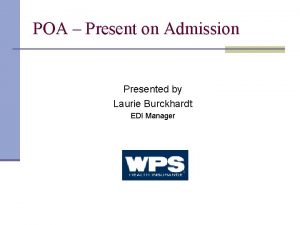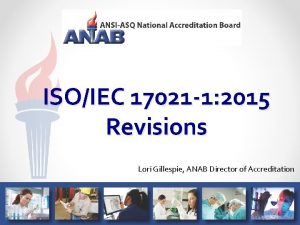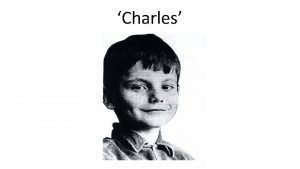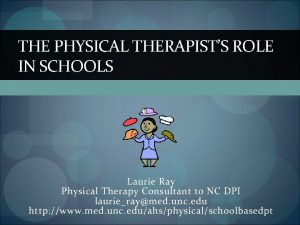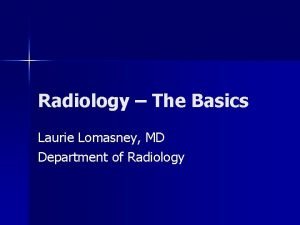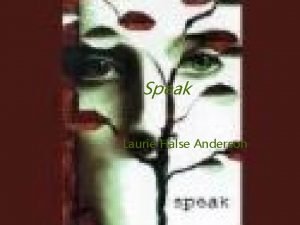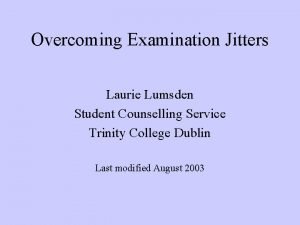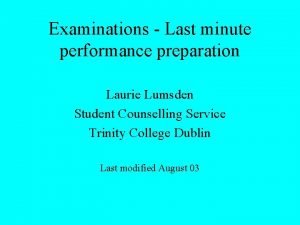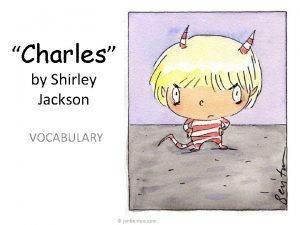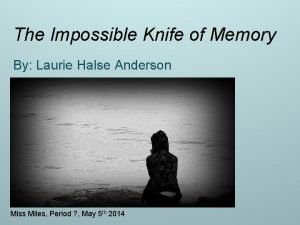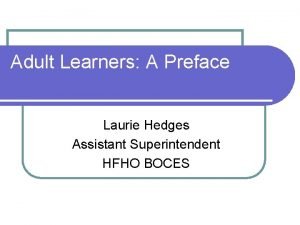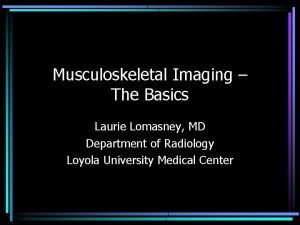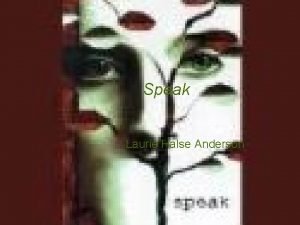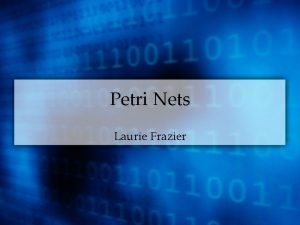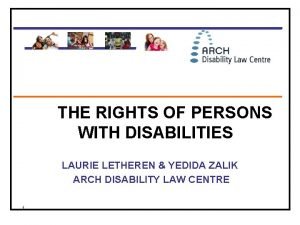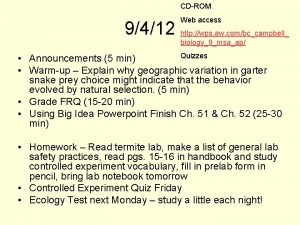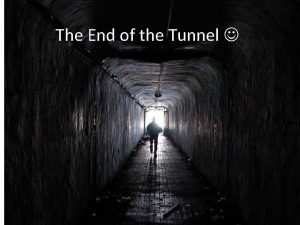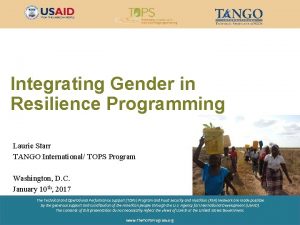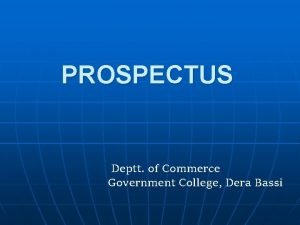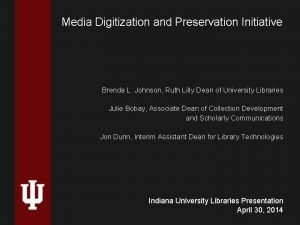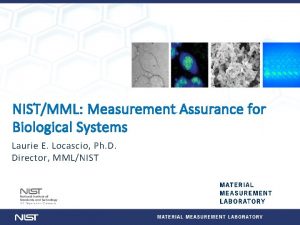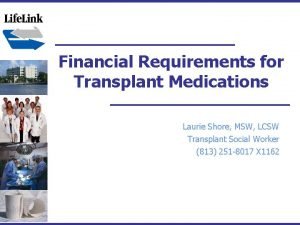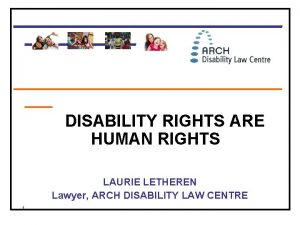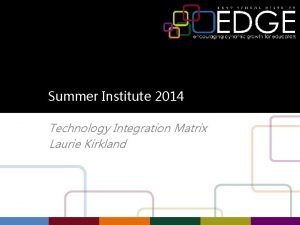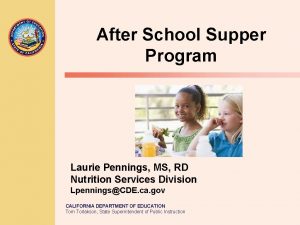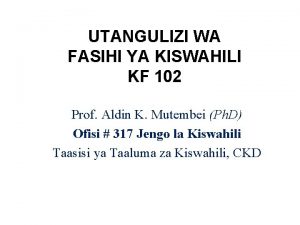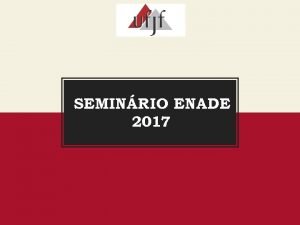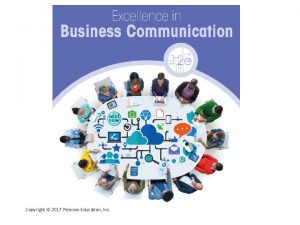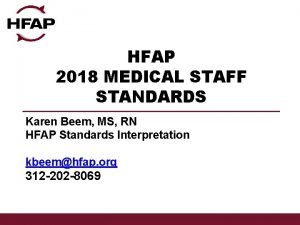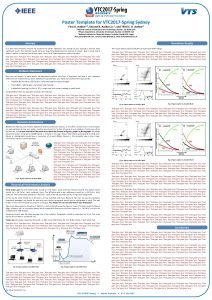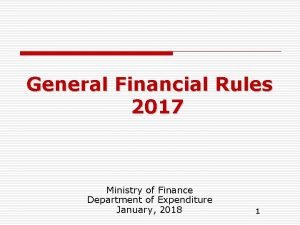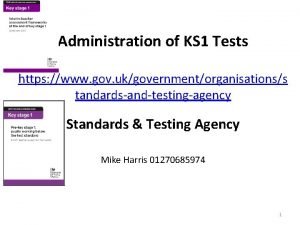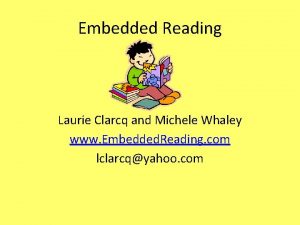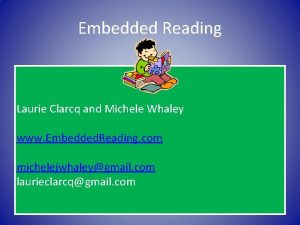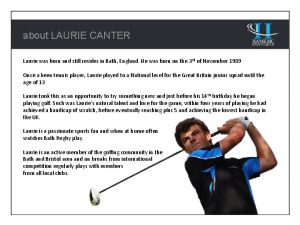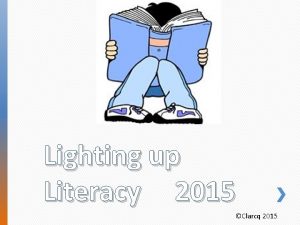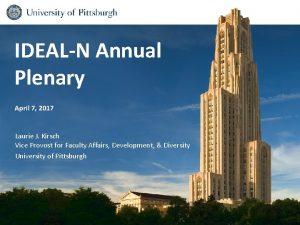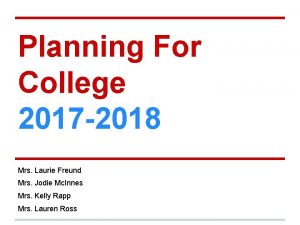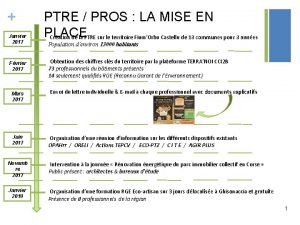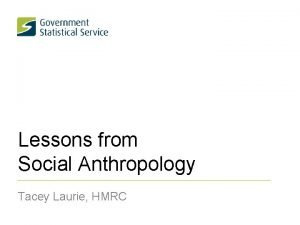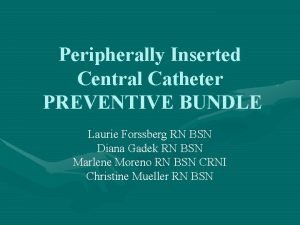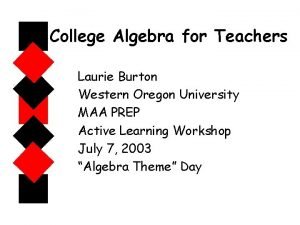VFLA 2017 Laurie Clarcq www heartsforteaching com www
































































- Slides: 64

VFLA 2017 Laurie Clarcq www. heartsforteaching. com www. embeddedreading. com lclarcq@yahoo. com


The purpose of language As used in communication Is to put a picture From one heart, and/or mind, Into another. L. Clarcq



Define TPRS® Teaching Proficiency through Reading and Story”telling”.

TPRS® Approach? Method? Technique? Tool? Trick question?

TPRS®

TPRS® “Definition”


“Definition”: A way to approach interaction in the language classroom. Goal: Increase students’ ability to COMMUNICATE Using: Interactive Input-based Activities Based on: Dr. Krashen’s Hypotheses

www. sdkrashen. com the Acquisition-Learning hypothesis the Monitor hypothesis the Natural Order hypothesis the Input hypothesis the Affective Filter hypothesis the Reading Hypothesis

Language Acquisition provides a better base for communication than Language Learning. ●Subconscious Brain at Work ●Less affected by the Affective Filter © L. Clarcq 2017

Comprehended Input creates and grows language in the brain. . Layers of Comprehended Input provide a language base for the brain. © L. Clarcq 2017

TPRS® Three _____ © L. Clarcq 2017

Ways to Provide Comprehensible Input Three Steps of TPRS®

Ways to Provide Comprehensible Input Three of TPRS® © L. Clarcq 2017

Ways to Provide Comprehensible Input Three Elements of TPRS® © L. Clarcq 2017

Three Elements of TPRS® 1. Identify meaning. 2. Interact via a Storyline. 3. Read. ©

Ways to Provide Comprehensible Input Use the Elements in an interactive activity: • Discussions about an interesting topic • Story-asking • Storytelling/Storylistening • Picture Talk/Movie Talk • Discussing any kind of reading • Etc. !! L. Clarcq 2017 ©

TPRS® Student Success © L. Clarcq 2017

Student Success=Increased Proficiency Who are the students? What is their present proficiency level? What kind of input are they successful with? Where are their strengths? How are they going to interact with the input? How and How often do I need to check for comprehension? © L. Clarcq 2017

Questions to ask about the instruction: 1. Is the goal to increase students’ ability to COMMUNICATE? 2. Does it incorporate interactive Input-based activities? 3. Is it based on Krashen’s Hypotheses? 4. Does the teacher check for comprehension? 5. Does it include three Elements of TPRS®? 6. Is it created for students’ success?

TPRS® Storyline © L. Clarcq 2017

7. Is the student focus on the storyline? © 2017 L. Clarcq

What a Demo is and is not….

A Demo is NOT an example of a lesson. It is more like a scrapbook of things that can happen as part of instruction over the course of days, or even weeks. It is condensed so that participants can become familiar with, in a short period of time, what a student in a TPRS® classroom experiences over a longer period of time.

A Demo is NOT a training. I do not participants expect to be able to plan, construct, or deliver a TPRS® lesson after participating in a demo.

Demo+Training (Clarcq’s) Student brain+Teacher brain Stages of Comprehension Interact in Vietnamese (Focus: Create a Base Using Input)





Visualize this:

























What kinds of “stories” have we seen so far? • Stories of people meeting people. • Stories of people and what they like to drink (including Justin T. !!) • Stories of people and where they get their coffee. • Stories about Si. Coming up: • Stories about videos • Stories connected to stories about videos.

TPRS® © L. Clarcq 2017

1. Is the goal to increase students’ ability to COMMUNICATE? 2. Does it incorporate interactive Input-based activities? 3. Is it based on Krashen’s Hypotheses? 4. Is the teacher checking for comprehension? 5. Does it include three Elements of TPRS®? 6. Is it created for students’ success? 7. Are the students focused on the storyline?

If you have questions like these: What about classes above Novice-Low? What about using a textbook? What about finding materials? What other kinds of “stories” are there? What does a class look like?

Or these: How do I bridge students to/from a program that uses TPRS®? How do I talk to administrators about it? How do I prepare students for it? How do I prepare myself for it? How do I know if I am doing it right?

You can find a schedule for numerous training opportunities here: Http: //blog. heartsforteaching. com/upcoming-tprstci-trainingopportunities/ © L. Clarcq 2017
 Bài thơ mẹ đi làm từ sáng sớm
Bài thơ mẹ đi làm từ sáng sớm Cơm
Cơm Laurie cuthbert
Laurie cuthbert The motel
The motel Laurie burckhardt
Laurie burckhardt Laurie halse anderson website
Laurie halse anderson website Dr laurie gillespie
Dr laurie gillespie Who is narrating the short story charles
Who is narrating the short story charles Laurie ray
Laurie ray Laurie lee md
Laurie lee md Roy pennings
Roy pennings Laurie baker low cost housing techniques
Laurie baker low cost housing techniques Laurie lomasney md
Laurie lomasney md Laurie halse anderson childhood
Laurie halse anderson childhood Sfre fund
Sfre fund Laurie marker
Laurie marker After a skydiving accident laurie
After a skydiving accident laurie Lse student counselling
Lse student counselling Laurie goodyear
Laurie goodyear Laurie lumsden
Laurie lumsden The day my son laurie started kindergarten
The day my son laurie started kindergarten Catalyst laurie halse anderson summary
Catalyst laurie halse anderson summary Laverne pavlinac why did she confess
Laverne pavlinac why did she confess Sheri roman
Sheri roman Laurie hedges
Laurie hedges Laurie lomasney md
Laurie lomasney md Laurie halse anderson biography
Laurie halse anderson biography Wintergirls theme
Wintergirls theme Laurie has message us
Laurie has message us Laurie frazier
Laurie frazier Daniel moore md
Daniel moore md Laurie letheren
Laurie letheren Laurie model webeweb
Laurie model webeweb Laurie simmons walking house
Laurie simmons walking house Thanksgiving point dinosaur museum
Thanksgiving point dinosaur museum Laurie williams ncsu
Laurie williams ncsu Laurie starr
Laurie starr Golden rule of framing the prospectus
Golden rule of framing the prospectus Brad and laurie johnson
Brad and laurie johnson Laurie e. locascio
Laurie e. locascio Laurie shore
Laurie shore Laurie bassi
Laurie bassi Laurie letheren
Laurie letheren Laurie welton
Laurie welton Www.kent.k12.wa.us frequently used links
Www.kent.k12.wa.us frequently used links Laurie pennings
Laurie pennings Forrester wave 2017 rpa
Forrester wave 2017 rpa Utangulizi wa fasihi ya kiswahili pdf
Utangulizi wa fasihi ya kiswahili pdf Nrg oncology semiannual meeting
Nrg oncology semiannual meeting Enade 2017
Enade 2017 Vce english text list 2017
Vce english text list 2017 Aashto lrfd 2017
Aashto lrfd 2017 2017 pearson education inc
2017 pearson education inc Hfap standards 2017
Hfap standards 2017 Nrg oncology meeting 2018
Nrg oncology meeting 2018 Sydney vtc
Sydney vtc Deutsche filme 2017
Deutsche filme 2017 Astro quiz 2019 questions and answers round 2
Astro quiz 2019 questions and answers round 2 Child, youth and family services act, 2017
Child, youth and family services act, 2017 Astro quiz round 2
Astro quiz round 2 Enem 2017 pesquisadores conseguiram estimular
Enem 2017 pesquisadores conseguiram estimular Upe 2017
Upe 2017 Financial rules 2017
Financial rules 2017 Assessment and reporting arrangements 2017
Assessment and reporting arrangements 2017 Copyright pearson education inc
Copyright pearson education inc


